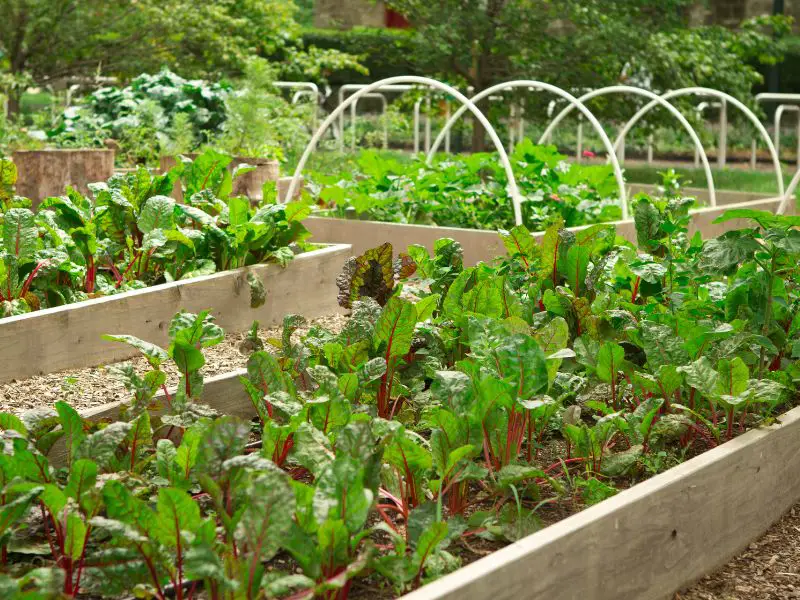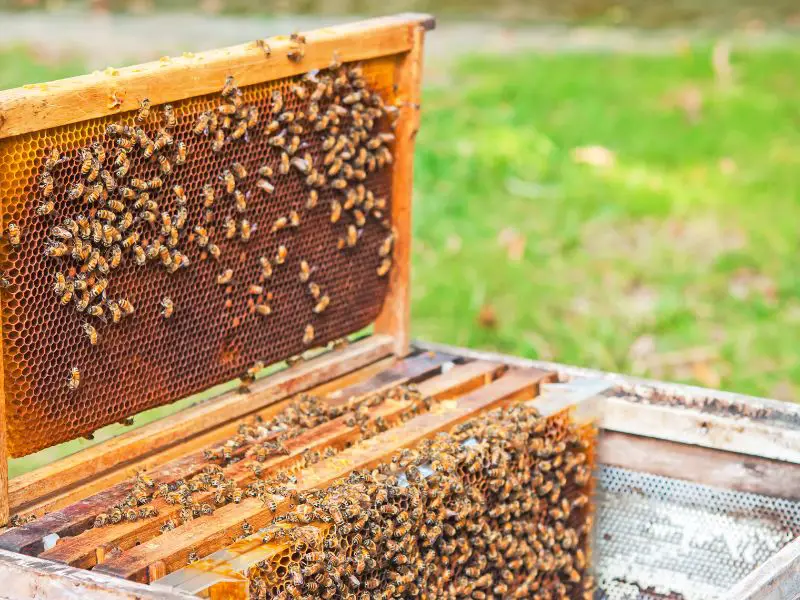Bees are vital to our planet’s ecosystem, and it is more necessary than ever before to protect them. Bee populations are in decline due to climate change, the destruction of their habitats, the use of pesticides, lack of food sources, diseases, and parasites.
In this article, I’ll share a few strategies everyone can implement to help save bees. By understanding why it’s so essential our tiny buzzing friends of the earth survive and thrive and take positive action steps towards this end, we can help ensure healthy bee populations now and in the future.
Why Save the Bees
Bees are a crucial part of the biodiversity that sustains us all. Their high-quality products, including honey, royal jelly, pollen, beeswax, propolis, and honey bee venom, are essential for our well-being. Additionally, sacred texts across major religions demonstrate the cultural significance of bees, as highlighted in the 2019 report by the Intergovernmental Science-Policy Platform on Biodiversity and Ecosystem Services (IPBES). Beekeeping provides a valuable source of income for many rural communities.

Over 80 million hives managed by the western honey bee, the most widely managed pollinator globally, produce an estimated 1.6 million tonnes of honey yearly. Pollinators, particularly bees, are directly responsible for one-third of the world’s food production, as reported by the Food and Agriculture Organization (FAO) of the United Nations. As such, conservation efforts to protect bee populations are essential to ensure global food security and preserve the biodiversity we depend on.
The Threats Facing Bees
Bees play a a central role in our ecosystem as pollinators, helping to fertilize plants and maintain biodiversity. However, these essential insects face various threats that are putting their populations at risk. The following are some of the biggest threats facing bees and why it is necessary to protect them.
- Habitat Loss: The loss of natural habitats, such as forests and grasslands, to make way for agriculture and urban development is one of the biggest threats to bee populations.
- Pesticides: The excessive use of pesticides, particularly neonicotinoids, has been linked to declining bee populations. These chemicals are toxic to bees and can harm their nervous systems, reducing their ability to forage, reproduce, and care for their young.
- Climate Change: Changes in temperature and precipitation patterns can disrupt the timing of flowering plants and food availability for bees, leading to declining bee populations.
- Disease and Parasites: Bees are vulnerable to various conditions, including the varroa mite, which can infect and kill entire colonies. The mass breeding and transporting of bees for commercial purposes can also increase the spread of diseases and parasites.
- Air Pollution: Air pollution, including particulate matter and ozone, can harm bees by reducing the quality and quantity of flowers available foraging and affecting their ability to navigate and locate food.
- Lack of Diversity: Monoculture crops and the widespread planting of just a few flowering plants can contribute to a lack of diversity in the food available to bees, reducing their ability to thrive and survive.
How Can We Save the Bees as A Society
Bees play a crucial role in pollination and maintaining biodiversity but face numerous threats, including habitat loss, pesticides, and disease. To protect these essential insects and secure a sustainable future, a joint effort is needed from individuals, communities, and governments. Here’s what we can do.

1. Start a Community Garden
Looking to make a positive impact on your community and environment? Consider planting a sustainable community garden that benefits you and attracts bees! By incorporating a variety of vegetables, herbs, and flowers, you can create a beautiful space that is both functional and beneficial to your local ecosystem.

To get started, consider launching a community fundraiser to collect donations and purchase supplies for your garden. Once you have the necessary resources, it’s time to start planning out your bee-friendly garden! Here are some helpful guidelines for what to include:
- Choose flowers that are blue, purple, or yellow. Bees can’t see red tones, so avoid red and pink flowers that may be harder to locate.
- Incorporate herbs such as lavender, mint, cilantro, and basil that attract bees. Additionally, consider planting native plant species in your area to promote bee health and environmental sustainability.
- Leafy vegetables such as kale, collard greens, and cabbage provide a valuable food source for bees during winter. Be sure to let these vegetables go to seed after harvesting to support the bee population.
- Set out a small tray of water, changed daily, to provide bees with a source of hydration while they visit your garden.
- Skip pesticides, including organic options, which can harm bees. Instead, use natural methods such as planting garlic or rotating crops to promote garden and bee health.
2. Support Your Town’s Agriculture
Supporting local agriculture is crucial for sustaining the bee population, which pollutes 87% of the world’s food crops. You can support the bees by shopping at local farmers’ markets, reducing your carbon footprint, and supporting local farmers. Additionally, using skincare products made with locally sourced beeswax can promote beekeepers’ livelihoods and help to nourish your skin with natural ingredients. By making these small yet significant changes, you can help preserve the ecosystem and support local bee populations.

3. Raise Funds for a Charitable Cause
Be a change-maker and ignite a “save the bees” campaign by collecting donations for environmental charities and organizations working to preserve bee populations. Alternatively, champion your community by starting a fundraiser that supports local beekeepers and farmers. Share your impactful fundraiser on social media to amplify your message and gather a wider circle of support for the cause of bee conservation. By initiating these small yet significant steps, you can contribute towards the sustainability of our planet’s ecosystem and help safeguard the essential role that bees play in it.

4. Build Houses for The Bees
To provide a conducive environment for bees, building honeybee habitats is a great way to encourage their nesting and burrowing. An untreated block of wood with numerous holes is a bee’s favorite pre-built natural habitat. Covering the holes with chicken wire can ensure the bees’ safety and prevent birds from disturbing them. Many bee species are solitary, so there’s no need to worry about attracting an entire hive into your yard. Creating honeybee habitats is a simple yet powerful way to support these essential pollinators in their role in our ecosystem.

5. Get Involved With Your Local Beekeeping Community Through Volunteering
You can support local beekeeping societies by volunteering your time for community outreach or organizing nonprofit fundraisers. These societies rely on volunteers to promote the well-being of bees and the environment through education and conservation efforts. By contributing your time or resources, you can make a meaningful impact on the sustainability of our ecosystem and the preservation of bee populations. Get involved with your local beekeeping society today to make a difference.
6. Get Involved in Your Local Beekeeping Club
Joining a beekeeping club is a fun and educational way to develop your skills, connect with like-minded individuals, and promote the well-being of bees and the environment. Alternatively, you can explore online options such as beekeeping groups on social media or informative YouTube videos to supplement your learning. Regardless of the approach, engaging with the beekeeping community is a valuable step toward supporting bee conservation and experiencing the joys of beekeeping.
Explore the world’s most endangered plants and species and learn about the threats they face, from habitat loss to climate change.
Bottomline
Saving bees is vital to preserving our ecosystems and promoting sustainable practices. By taking small yet meaningful steps such as planting bee-friendly habitats, supporting local agriculture, and getting involved with beekeeping societies, we can contribute towards the well-being of bee populations and safeguard their crucial role in pollinating plants and crops.
Whether through advocacy, education, or action, we all have a part to play in providing a brighter future for bees and our planet. So let’s embrace these simple practices and work together towards a more sustainable and bee-friendly world.
Discover the amazing health benefits of honey, including its antibacterial and antioxidant properties, ability to soothe sore throats and coughs, and potential to aid in wound healing and digestive issues.

